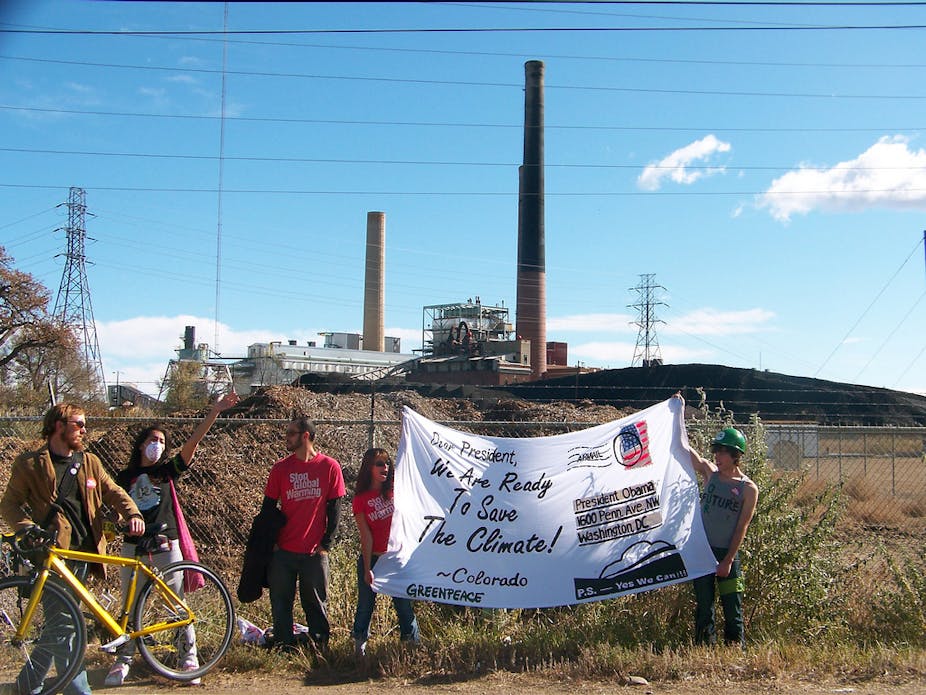Around the world, people concerned about global warming and wary of higher energy costs are turning away from big power distributors in favour of local and “distributed” energy technologies and services.
You may have seen this video doing the rounds lately. It tells the story of Boulder, Colorado, where the city council is planning to take over the electricity supply system from their utility, Xcel Energy.
Not surprisingly, Xcel is resisting. Boulder wants to reduce their reliance on fossil fuels and lower the cost of electricity. And they have framed this as a battle between a small community and a corporate energy giant.
It’s unclear whether Boulder will succeed in taking control of the grid, as while just this week the proposal was given the thumbs up by voters, it is bound to face legal challenges from Xcel.
But could this “people’s revolt” be a sign of future localised energy autonomy?
A global trend towards local energy autonomy
The village of Schönau in Germany has inspired many other villages by purchasing their local grid to secure cheaper power. These have become hot spots for investment in smart technology and renewable energy.
In post-Fukishima Japan, a trend towards individual households installing solar power, combined with hydrogen fuel cells and storage, is starting to take place, allowing them to be largely independent from the grid.
In Scotland, almost 300 community-driven renewable energy projects are stimulating economic development and providing jobs to previously struggling regional areas.
And now over a million Australian households, with the residential solar boom, have demonstrated a desire to lessen their grid dependence. Further, as many as 70 community renewable energy groups are looking to create clean energy projects and investment opportunities for local shareholders.
In Boulder, there is a single electricity company, Xcel Energy, which performs generation, grid and retail functions. But in most Australian jurisdictions, we have separate competitive markets for generators and retailers.
This means it is harder for disgruntled consumers to pin their dissatisfaction on any single organisation. While technically possible, stringent regulations and requirements for retail competition in most Australian states make it more challenging for local government areas to take over the grid.
Room for a smaller model of grid management?
A certain type of micro-grid, known as private networks, already exist in Australia in some caravan parks, universities, office buildings and shopping centres.
To implement a private network, the landlord applies for licenses to on-sell power to tenants or strata-title owners.
Could this model be expanded to allow communities to do the same?
One attempt to do this occurred in 2007, when GridX Pty Ltd proposed to build, own and operate island micro-grids in residential estates. It planned to supply electricity via gas micro-turbines, billed to customers via a retail agreement with AGL. A connection with the existing distribution network was to be maintained but only to export surplus power.
But the Australian Energy Regulator refused GridX on the grounds that their customers wouldn’t have access to retail competition. They were also concerned that network safety and reliability could be compromised. But the door was left open for case-by-case exemptions if these challenges could be overcome.
Six years on from their decision, after drastic network price rises and decentralised energy cost reductions, a business model might be able to comply with the regulator’s requirements on price certainty, safety and reliability.
Even more attractive to the regulator may be a situation in which the entity seeking network exemption is representative of a community. This could be as either a cooperative or a similar structure in which members are unanimous in their support of the project.
Keeping electricity networks in the picture
From a grid company’s perspective, is there a more attractive option that doesn’t involve new grid ownership models? Drawing lessons from Boulder’s experience, networks need to become facilitators of customer and community ambition and expectations.
One way in which networks could achieve this is through a concept called “Virtual Net Metering”, or VNM. This is when a local “distributed” generator is allowed to assign its electricity to other local customers.
Currently, if a large local generator wants to service more than one building, they incur full network charges for transferring power to surrounding buildings.
These charges effectively render the grid electricity transfer unviable, leading the generator to consider one of two options. They can build a local private network and duplicate infrastructure; or reduce the size of the system to eliminate grid exports (which limits achievable local greenhouse gas emission reductions).
This stalemate could be solved through the introduction of a dedicated “VNM” tariff class, replacing full network charges with cost-reflective charges for partial use of existing networks.
This scenario is more attractive to networks than individual customers removing themselves from the grid entirely or private networks being built.
Naturally, it is vital that this is done in a manner that reduces costs to consumers, as electricity prices are one of the key drivers of the movement away from the grid.
The design of the VNM tariff class is key to its success. Firstly, it must ensure that the right signals are created for generators to support the network at peak times. Secondly, it should promote the bundling of complementary peak load reduction and energy efficiency services, to manage and balance load within the local area.
The Consumer Advocacy Panel has just approved a proposal by the Total Environment Centre and the Coalition for Community Energy to further investigate how VNM could provide an efficient mechanism to connect local generators and consumers.
This may allow our utilities to better foster local energy ambitions, limiting the risks of a Boulder-style revolt or customers going off-grid entirely.

